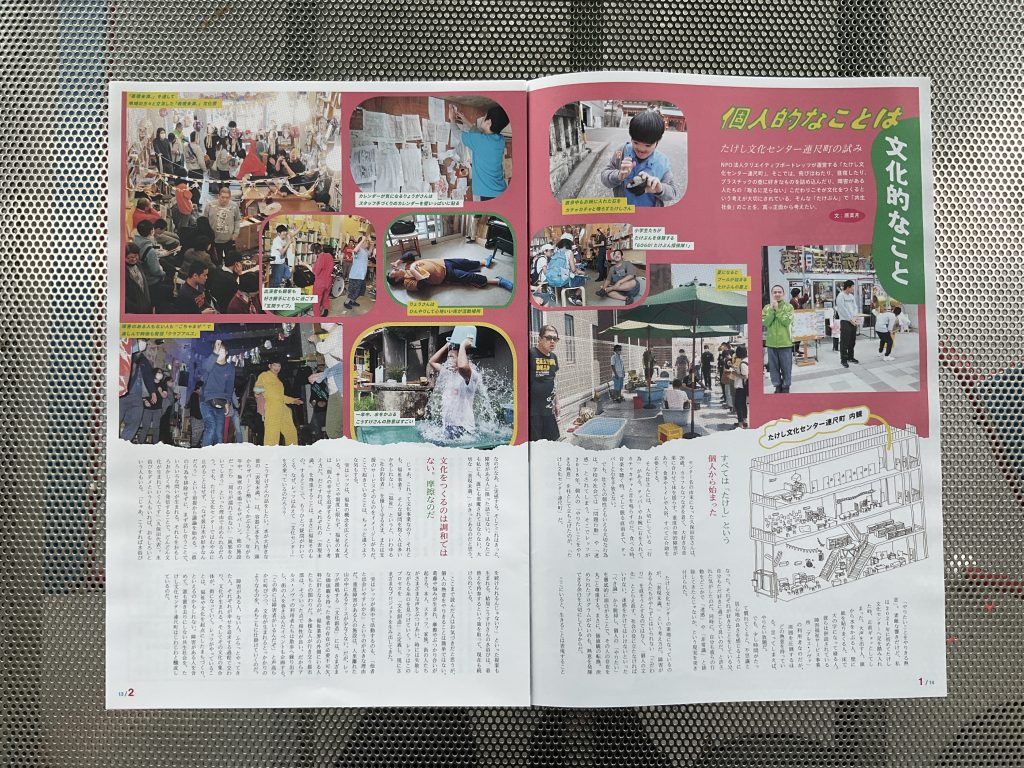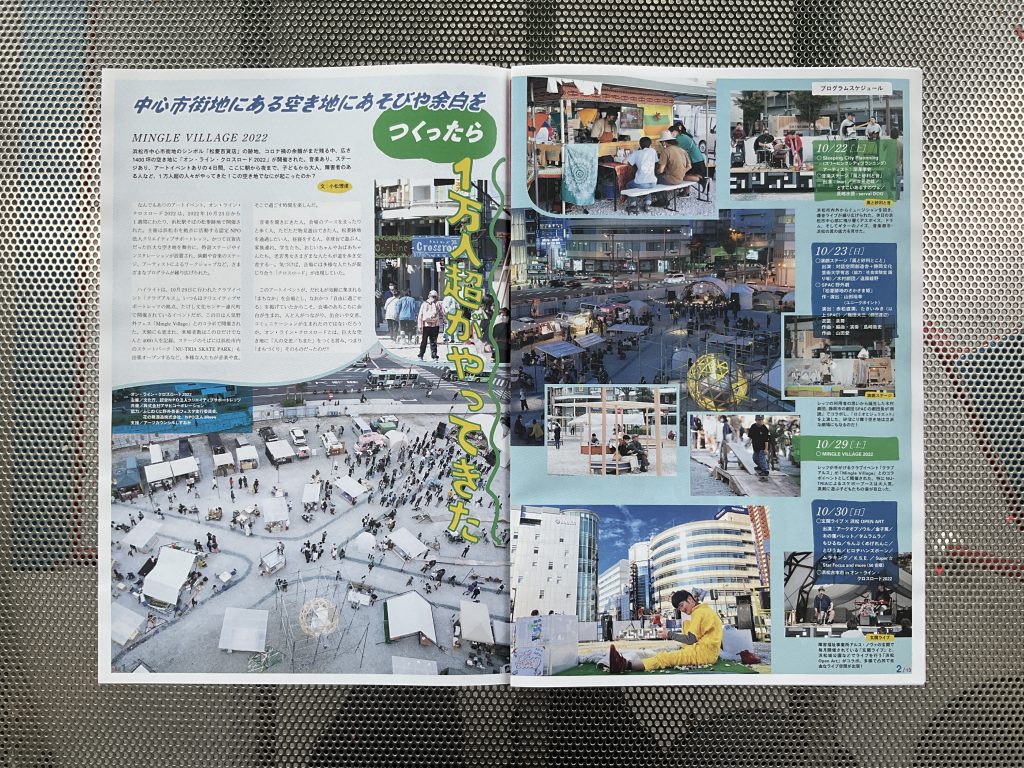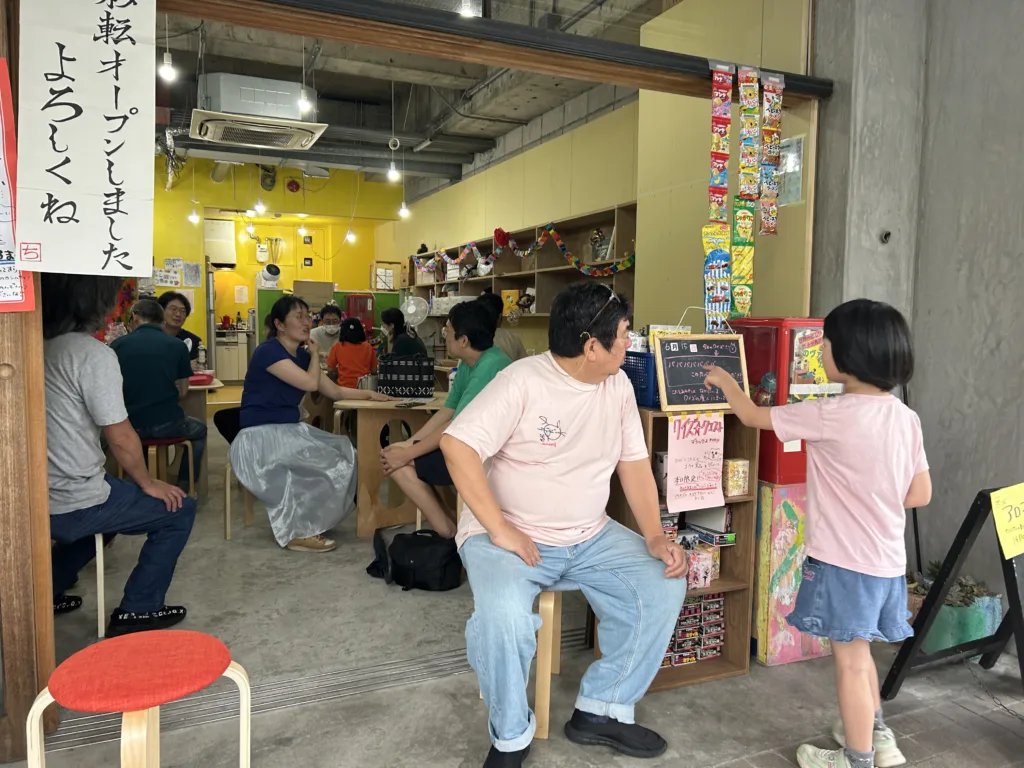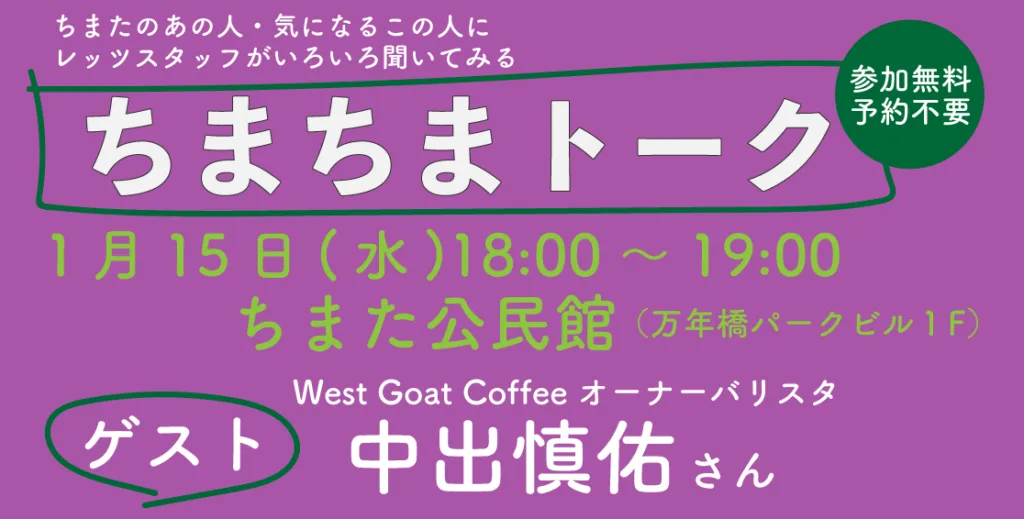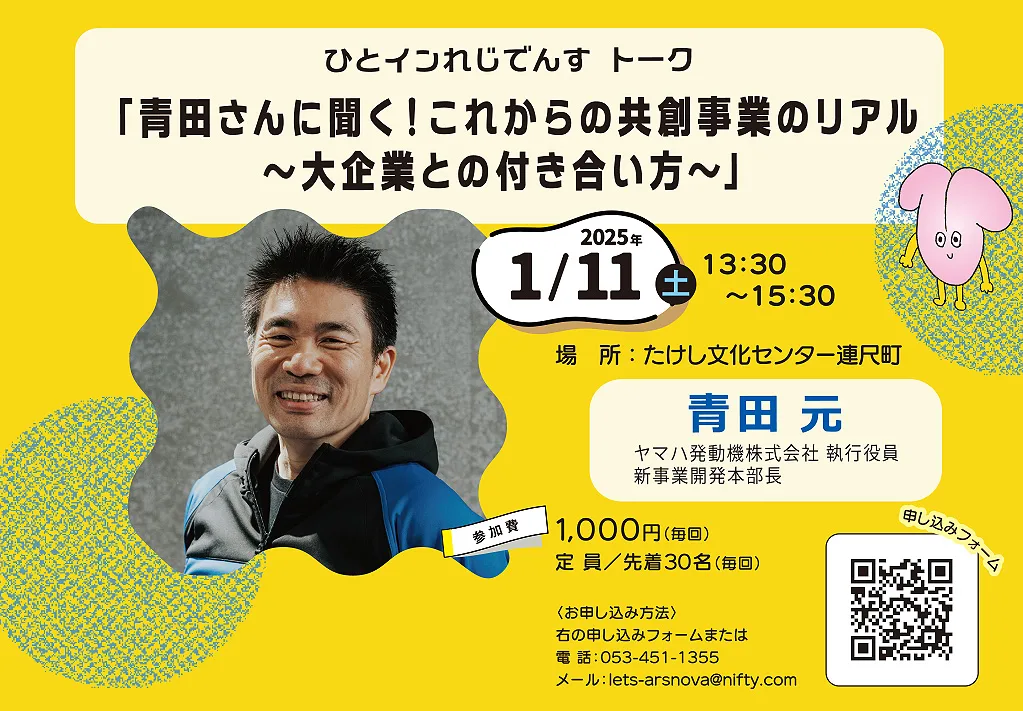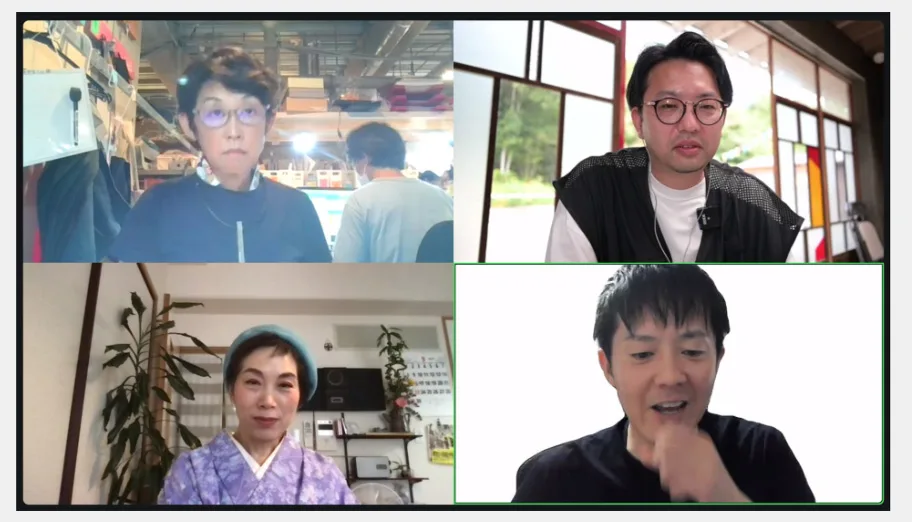「まちづくりを考えたら、福祉にたどりついたvol.2」完成しました!!

2022年度 事業報告書
「まちづくりを考えたら、福祉にたどりついたvol.2」完成しました!!
テーマは「公共から個人へ、個人から公共へ」
タブロイド紙は両面から読むことができ、左側からは参加者1万人超えを記録した「オン・ライン・クロスロード2022」や浜松ちまた会議の様子、右側からは、たけし文化センターやちまた公民館の実験、レッツの軌跡が記録されています。そして、真ん中ページでは公共と個人が混じり合うローカルの未来が描かれています。
福島のローカルアクティヴィスト小松理虔さんやライター原菜月さんもコラムも必見です。
レッツ23年にわたる活動をギュッと盛り込んだ内容となっております。
順次発送しておりますので、ぜひ御覧下さい。ウェブのリンク先からもダウンロードできますよ!
浜松ちまた会議ウェブサイト
https://sites.google.com/otesto.net/hamamatsuchimatakaigi
ーーーーーーーー
目次
1/14p 個人的なことは文化的なこと
2/12p 「私」を開き、「公共」をつくる
5/10p クリエイティブサポートレッツの軌跡
8/7p ローカルの未来をつくる
6/9p まちづくりを考えたら、福祉にたどりついた
4/11p 産業中心の街から、あそびや余白が生まれる街へ。新しい街のあり方がみえてきた
2/13p 中心市街地にある空き地にあそびや余白をつくったら、1万人超えがやってきた
ーーーーーーーーーーーーー
2023年度事業報告書
文化庁委託事業「令和4年度障害者等による文化芸術活動推進事業」
主催:文化庁、認定NPO法人クリエイティブサポートレッツ
支援:アーツカウンシルしずおか
発行:認定NPO法人クリエイティブサポートレッツ
執筆・編集:小松理虔、原菜月、認定NPO法人クリエイティブサポートレッツ
デザイン:BOB.des’(ウエダトモミ)

